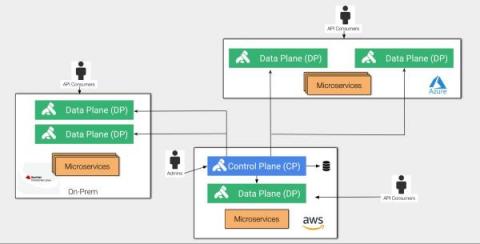Systems | Development | Analytics | API | Testing
Cloud
What is an Internal Developer Platform (IDP) and Why It Matters
Revolutionizing Cloud Logging: Say Goodbye to Limitations and High Costs
Cloud logging services have long been plagued by limitations and high costs, hindering companies’ ability to achieve true flexibility in their operations. One of the primary obstacles is the lack of flexibility in traditional cloud logging services, which often require companies to make upfront decisions about log levels and storage capacity, locking them into fixed plans for extended periods.
insightsoftware Introduces Comprehensive Cloud Platform
New insightsoftware Platform connects financial analytics, reporting, and performance management solutions to share data across applications, solve business problems faster, and do more with less.
API-Managed Event Streaming with Kong Konnect and Amazon MSK
Event streaming allows companies to build more scalable and loosely coupled real-time applications supporting massive concurrency demands and simplifying the construction of services. Ultimately, we may need to grant access to such infrastructure to the most diverse entities, including external applications posting events that will be eventually consumed by internal systems. The purpose of such exposure is to promote development teams’ collaboration.
Unleashing the power of Fivetran and Azure Synapse for accelerated data movement
Say goodbye to constant “One-Offs” and hello to “Set It and Forget It”
What is gRPC?
gRPC is an open source remote procedure call (RPC) framework that enables client and server applications to communicate with each other remotely and transparently. In this blog post, we are going to discuss gRPC. First, we’ll talk about RPCs and why they are important. Then we’ll explain how gRPC works, taking a closer look at protocol buffers and the architecture of gRPC.
Building Cloud Native Data Apps on Premises
Data is core to decision making today and organizations often turn to the cloud to build modern data apps for faster access to valuable insights. With cloud operating models, decision making can be accelerated, leading to competitive advantages and increased revenue. Can you achieve similar outcomes with your on-premises data platform? You absolutely can.
Reach for the Clouds: A Crawl/Walk/Run Strategy with Kong and AWS
I once heard someone say, “What the cloud migration strategies lack at the moment is a methodology to Lift-and-Shift connections to the cloud.” Let’s digest that. In today’s landscape, maintaining a competitive edge and delivering a high-quality customer experience is becoming synonymous with migrating to the cloud. As of 2022, 57% of organizations are migrating more workloads to the cloud.











